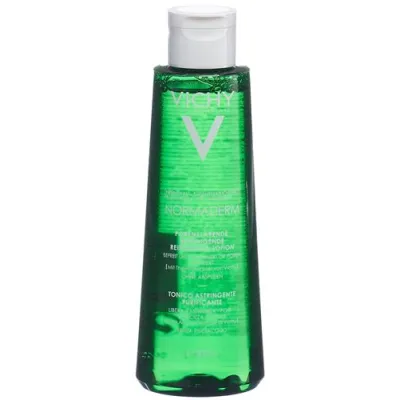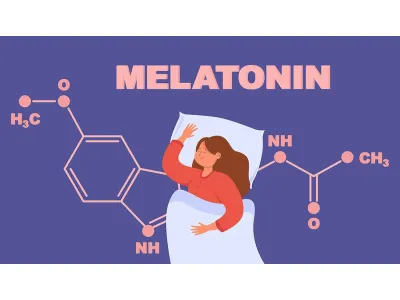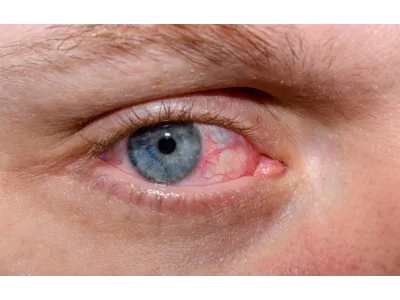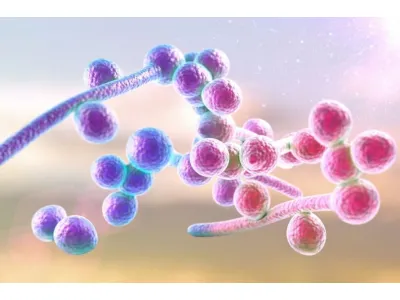The Power of Salicylic Acid and Vitamin C for Acne-Prone Skin
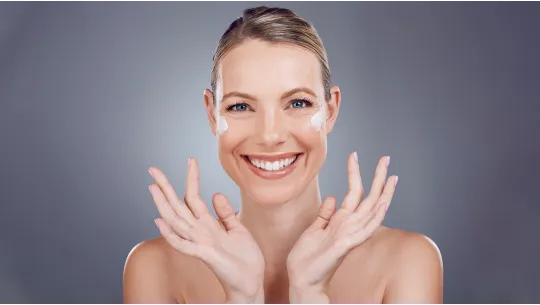
Acne-prone skin is a problem that affects people of all ages, and is most common in teens and young adults. A problematic skin type is prone to acne, a disease that manifests itself in the form of pimples, blackheads, whiteheads, and in severe cases, cysts and nodules.
Acne-prone skin
In acne-prone skin, rashes, black spots, clogged pores appear much more often and more intensively than in other skin types. Often the problematic skin condition is genetically predisposed, but it can also depend on hormonal changes and lifestyle factors. This skin type is characterized by excessive sebum production and a tendency to clog pores, creating a breeding ground for acne-causing bacteria.
Characteristics of acne-prone skin:
- Excessive Sebum Production: Sebum is needed to maintain moisture and protect the skin, but too much of it makes the skin oily, contributing to acne breakouts.
- Clogged Pores: Acne-prone skin is often clogged by sebum, dead skin cells, and sometimes makeup or skincare products. These plugs can appear as blackheads (open comedones) or whiteheads (closed comedones).
- Inflammation and redness. The presence of acne-causing bacteria, such as Propionibacterium acnes, leads to inflammation and the appearance of red, swollen pimples. Inflammatory acne is likely to cause scarring and require thorough treatment.
- Uneven skin texture. Those with acne-prone skin may notice uneven skin texture, including bumps, scars, and areas of hyperpigmentation left over from previous breakouts.
Treating Acne-Prone Skin
Acne-prone skin, which is characterized by rashes, excessive secretion of sebum and clogged pores, requires a special approach to treatment. Treatment is aimed not only at reducing existing acne, but also at preventing future breakouts and minimizing the risk of scarring.
Topical Treatments
Topical treatments are essential for acne-prone skin, and are applied directly to the skin to reduce symptoms and prevent new breakouts. Treatments target acne-causing factors such as excess sebum, bacterial growth, inflammation and clogged pores.
- Benzoyl Peroxide: Has the ability to kill P. acnes, the bacteria responsible for acne. By giving off oxygen, it destroys bacteria because they cannot survive in an oxygen-saturated environment. It also helps exfoliate the outer layer of skin, clearing pores and reducing inflammation. When using benzoyl peroxide, start with a lower concentration to assess skin tolerance and gradually increase as needed. Apply to affected areas once or twice a day and remember that benzoyl peroxide can bleach tissues.
- Salicylic Acid: A beta hydroxy acid (BHA) that penetrates pores to dissolve dead skin cells and sebum, preventing the clogging that leads to breakouts. It has anti-inflammatory properties that reduce redness and swelling of acne. Salicylic acid is available in concentrations ranging from 0.5% to 2%. For daily use, choose lower-end products to minimize irritation. Vichy Normaderm cleansing lotion contains active ingredients, salicylic and glycolic acid, which restore the skin, narrow pores, mattify the complexion, remove impurities and excess sebum.
- Retinoids: tretinoin, adapalene, tazarotene are derivatives of vitamin A. They sell cellular renewal, boost up exfoliation of dead cells, and prevent pore clogging. Retinoids correctly lessen the arrival of pimple scars and have anti-ageing properties. Use retinoids at night because they make the skin sensitive to daylight. Don't overlook the use of sunscreen during the day.
- Alpha Hydroxy Acids (AHAs): Glycolic and lactic acids exfoliate the skin's surface, help do away with dead skin cells, and sell smoothness. Improves skin structure and reduces the appearance of pimples scars over time. AHAs can increase solar sensitivity, so a high SPF sunscreen should be carried out each morning. Use AHA products numerous times a week and regulate primarily based on skin condition.
- Azelaic acid: effective in the treatment of inflammation and hyperpigmentation. Kills acne-causing bacteria, reduces inflammation and helps clear pores. Azelaic acid is suitable for sensitive skin and pregnant women as it is gentle but effective. The acid can be used twice a day and is suitable for long-term treatment. Well tolerated by most skin types and works effectively in combination with other acne treatments.
Vichy normaderm cleansing lotion 200 ml
Removes excess sebum, tightens pores and mattifies the complexion. Composition Aqua, Alcohol Denat., Glycerin, Sodium Citrate, Propylene Glycol, Peg-60 Hydrogenated Castor Oil, Ci 19140, Ci 42053, Glycolic Acid, Triethanolamine, Salicylic Acid, Dipotassium Glycyrrhizate, Disodium Edta, Citric Acid, Perfume.. Properties The Vichy Normaderm Pore-Clearing Cleansing Lotion contains skin-renewing active ingredients. These reduce the pores, mattify the complexion and remove dirt and excess sebum. The skin appears immediately refined, clarified and refreshed. Reduces rednessMoisturizesReduces poresCleans gently Matte Application Put on a cotton pad and apply to the face before day care. ..
28.03 USD
Salicylic acid and vitamin C together
The combination of salicylic acid and vitamin C works effectively for acne-prone skin.
Salicylic acid, a beta hydroxy acid (BHA), deeply cleanses pores, while vitamin C, a powerful antioxidant, brightens the skin and has antioxidant properties. When used together, salicylic acid with vitamin c effectively fights acne, reduces inflammation, and improves skin tone and texture.
Salicylic acid penetrates pores, dissolves dead skin cells and sebum, and helps clear blockages that lead to breakouts. Anti-inflammatory properties reduce redness and swelling associated with breakouts. It is very effective to use masks based on salicylic acid, for example, Avene Cleanance MASK, which absorbs sebum, especially for oily and polluted skin. A combination of alpha- and beta-hydroxy acids and peeling particles cleans pores and removes impurities from the skin. Monolaurin regulates excess sebum, and white clay provides a quick matting effect.
Vitamin C, in turn, brightens the skin, stimulates collagen production, and protects against UV damage and pollution. Antioxidant properties help fight free radicals, reducing the risk of inflammation and promoting skin healing. For acne-prone skin, vitamin C helps remove acne scars and improve complexion.
Using vitamin c and salicylic acid together enhances their properties, but it is very important to incorporate them correctly to avoid irritation.
- Cleansing: Cleanse the pores and skin with a salicylic acid-based cleaning gel. Wash and dry the skin very well, apply a vitamin C serum to get rid of irritation and hyperpigmentation. For instance, La Roche Posay Redermic Pure Vitamin C10 is a powerful serum that saturates the skin with highly effective vitamin C, making it smoother, brighter and plumper. In addition to 10% vitamin C, best for sensitive pores and skin, the serum also contains salicylic acid and neurosensin to help improve skin texture and tone.
- Sun safety: salicylic acid and vitamin C increase the skin's sensitivity to the sun and provoke age spots. Use an extensive-spectrum sunscreen to defend your skin from UV rays and save you hyperpigmentation. Before the use of each ingredient, perform a patch test to make sure that the skin does not become red and sensitive.
Salicylic acid deeply cleanses pores and perfectly enhances the brightening and defensive houses of vitamin C, putting off present irritation, preventing new breakouts and decreasing the appearance of zits scars.
Disclaimer: The article includes information about using salicylic acid and vitamin C and should not be considered medical advice. The aggregate of ingredients isn't always suitable for touchy skin or people with active breakouts. Do a patch test before the usage of new products.
M. Stähli

